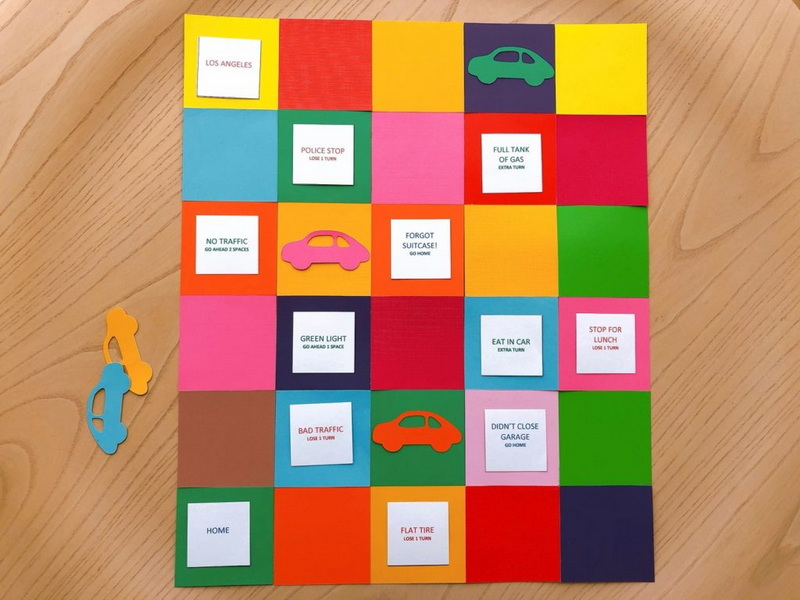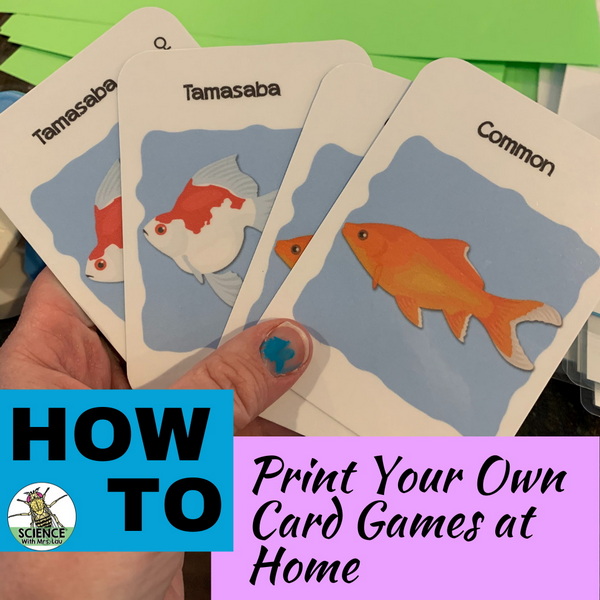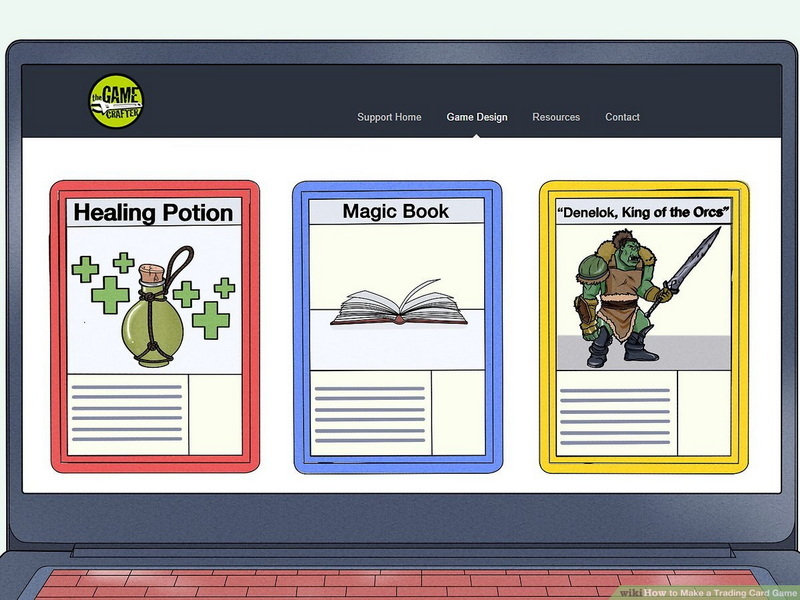Content Menu
● Conceptualization
>> Define the Theme
>> Determine Game Mechanics
● Designing the Cards
>> Choose Design Software
>> Create Card Templates
● Card Types and Content
● Artwork and Graphic Design
>> Select Artwork Style
>> Incorporate Color Theory
● Prototyping Your Cards
>> Print Test Cards
>> Conduct Playtests
● Finalizing Your Card Designs
>> Prepare Files for Printing
>> Choose Printing Options
● Production and Distribution
● Conclusion
● Related Questions
>> 1. What software is best for designing board game cards?
>> 2. How do I ensure my card game is balanced?
>> 3. What types of cards should I include in my game?
>> 4. How can I make my card designs visually appealing?
>> 5. What are effective ways to prototype my card game?
● Citations:
Creating cards for a board game is an exciting and creative process that combines design, gameplay mechanics, and thematic elements. Whether you are designing a simple card game or a complex trading card game (TCG), the steps involved in creating your cards can be broken down into several key phases. This article will guide you through the entire process, from conceptualization to final production, ensuring that your card game is both engaging and visually appealing.

Conceptualization
Before diving into the design phase, it is crucial to have a clear concept for your card game. This includes defining the game's theme, mechanics, and target audience.
Define the Theme
The theme of your card game sets the tone and context for gameplay. Consider the following questions:
- What story or setting does your game take place in?
- Are there specific characters or factions involved?
- What emotions do you want players to experience?
Examples of popular themes include fantasy (like *Magic: The Gathering*), sci-fi (like *Star Realms*), and historical settings (like *Chronicles of Crime*).
Determine Game Mechanics
Decide how players will interact with the cards. Common mechanics include:
- Resource Management: Players must manage resources to play cards.
- Combat: Cards represent units that engage in battles.
- Deck Building: Players create their decks from a pool of cards.
Establishing these mechanics early on will guide your card design.
Designing the Cards
Once you have a clear concept, it's time to start designing your cards. This phase involves creating the visual layout and content for each card.
Choose Design Software
Select graphic design software that suits your needs. Some popular options include:
- Adobe Illustrator: Industry-standard for vector graphics.
- Inkscape: A free alternative for vector design.
- Canva: User-friendly for beginners, ideal for simple designs.
Each software has its strengths; choose one that aligns with your skill level and project requirements.
Create Card Templates
Design templates for your cards to maintain consistency across the deck. Key components of a card template include:
- Card Name: Clearly visible at the top.
- Artwork Area: Space for illustrations or images.
- Text Box: For abilities, effects, or flavor text.
- Cost Indicator: If applicable, show how much it costs to play the card.
Make sure that these elements are well-organized and easy to read.

Card Types and Content
Different types of cards can add depth to your game. Consider incorporating various card types such as:
- Action Cards: Cards that trigger specific actions when played.
- Character Cards: Represent players or units with unique abilities.
- Event Cards: Introduce random events that affect gameplay.
For each card type, define its attributes and how they interact with other cards in the game.
Artwork and Graphic Design
Artwork plays a significant role in attracting players to your game. It should complement the theme and enhance gameplay without overwhelming the player.
Select Artwork Style
Decide on an art style that fits your theme. Options include:
- Illustrative Art: Detailed drawings or paintings.
- Graphic Design: Minimalist icons or symbols.
- Photographic Images: Real-life images that enhance realism.
Consider hiring an artist if you lack artistic skills or use royalty-free images available online.
Incorporate Color Theory
Use color effectively to differentiate between card types and convey emotions. For example:
| Color | Emotion/Theme |
| Red | Aggression/Passion |
| Blue | Calm/Intellect |
| Green | Nature/Growth |
| Yellow | Happiness/Optimism |
Ensure that colors are consistent throughout your deck to create a cohesive look.
Prototyping Your Cards
Before finalizing your designs, create prototypes to test gameplay mechanics and visual appeal.
Print Test Cards
Print out your cards on cardstock using standard printing methods. You can also use online services that specialize in custom card printing for higher quality results.
Conduct Playtests
Gather friends or family to playtest your game with the prototype cards. Pay attention to their feedback regarding:
- Clarity of card text
- Visual appeal
- Gameplay balance
Use this feedback to make necessary adjustments before final production.
Finalizing Your Card Designs
After refining your prototypes based on playtesting feedback, it's time to finalize your designs for production.
Prepare Files for Printing
Ensure that all artwork is high-resolution (at least 300 DPI) and formatted correctly for printing. Export files in formats like PDF or PNG as required by your printing service.
Choose Printing Options
Select a printing service that specializes in board game components. Consider factors such as:
- Cardstock quality
- Finishing options (e.g., matte vs. glossy)
- Custom sizes or shapes
Many services offer bulk discounts, so plan accordingly based on expected demand.
Production and Distribution
Once printed, you can start distributing your game. If you're self-publishing, consider options like crowdfunding platforms (e.g., Kickstarter) or selling through online marketplaces.
Conclusion
Creating cards for a board game is a multifaceted process that requires careful planning, creativity, and iteration. By following these steps—from conceptualization through production—you can develop a captivating card game that engages players both visually and mechanically.

Related Questions
1. What software is best for designing board game cards?
Several software options exist depending on skill level:
- Adobe Illustrator (professional)
- Inkscape (free)
- Canva (user-friendly)
2. How do I ensure my card game is balanced?
Test different combinations of cards during playtesting sessions and gather feedback from players regarding fairness and enjoyment.
3. What types of cards should I include in my game?
Consider including action cards, character cards, event cards, and resource management cards based on your game's mechanics.
4. How can I make my card designs visually appealing?
Use cohesive color schemes, high-quality artwork, and clear typography to enhance visual appeal while ensuring readability.
5. What are effective ways to prototype my card game?
Print test cards on cardstock or use online services for custom prints; conduct playtests with friends to gather feedback before finalizing designs.
Citations:
[1] https://www.coreldraw.com/en/tips/card-game-design/
[2] https://thesciencesurvey.com/arts-entertainment/2021/03/21/blank-cards-how-do-you-create-a-card-game-from-scratch/
[3] https://www.bgdf.com/forum/game-creation/new-game-ideas/card-ideas
[4] https://www.boardgamesmaker.com/customized/custom-game-cards.html
[5] https://www.bgdf.com/blog/considerations-when-making-boardcard-game
[6] https://faq.looneylabs.com/non-gameplay-questions/game-design-publishing-faq
[7] https://boardgamedesignlab.com/how-to-design-a-board-game/
[8] https://www.reddit.com/r/boardgames/comments/2gdk77/examples_of_great_card_graphic_design/
[9] https://www.spieleautorenzunft.de/questions-of-new-board-game-designers.html
[10] https://praliedutzel.wordpress.com/2013/01/31/creating-a-card-game-from-start-to-finish/
[11] https://entrogames.com/occasionally-asked-questions-volume-1-boardgamegeek-making-cards-and-end-game-conditions/
[12] https://www.ducksauce.games/blog/how-to-design-a-card-game
[13] https://www.youtube.com/watch?v=l0t6PBypahI
[14] https://www.cnblogs.com/apachecn/p/18462315
[15] https://www.instructables.com/Build-your-Own-Board-Game/
[16] https://www.cnblogs.com/apachecn/p/18473540
[17] https://boardgames.stackexchange.com/questions/12174/which-program-to-chose-when-designing-my-own-cards
[18] https://www.youtube.com/watch?v=XDd4u2xnRtE
[19] https://www.youtube.com/watch?v=9SdkIXyZepE
[20] https://www.reddit.com/r/boardgames/comments/upugb8/whats_the_best_method_for_making_quality_diy/
[21] https://www.youtube.com/watch?v=B9H5OQVYF7s
[22] https://www.scienceandmathwithmrslau.com/2021/02/how-to-print-your-own-card-game-decks/
[23] https://www.youtube.com/watch?v=qm4AXa1LKaI
[24] https://www.behance.net/search/projects/card%20game%20design
[25] https://99designs.com/inspiration/designs/card-game
[26] https://www.reddit.com/r/BoardgameDesign/comments/rfbg4p/any_ideas_for_cards_in_my_board_game/
[27] https://uxdesign.cc/board-game-ux-help-and-documentation-74335da5ce20?gi=cb3adce97d69
[28] https://boardgames.stackexchange.com/questions/22729/how-can-i-create-my-own-card-for-my-own-game































